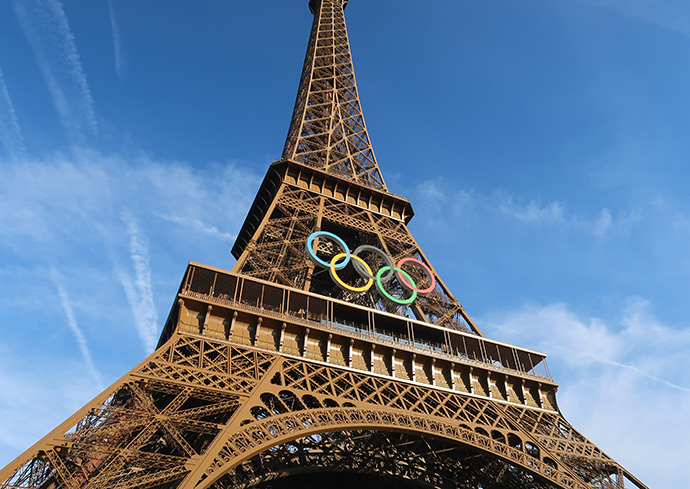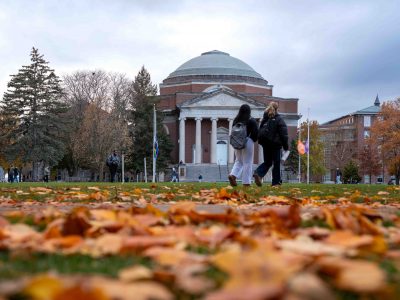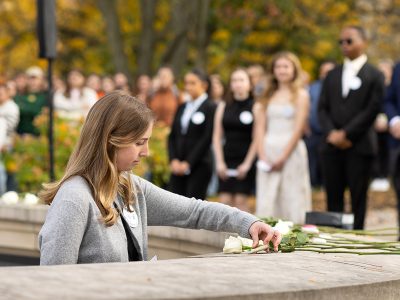Hosting the Olympic Games: Trouble or Opportunity for Landmark Cities?
As Paris hosts the 2024 Summer Olympics, the iconic city and its landmarks—from the Eiffel Tower to the Palace of Versailles—are on the world stage.
What does the world’s attention, and huge influx of visitors, mean for these grand architectural sites? Jess Myers, assistant professor in the School of Architecture, looks at the issue through an urban planning lens. Myers lived in Paris in 2012 when the Summer Olympics were held in nearby London.
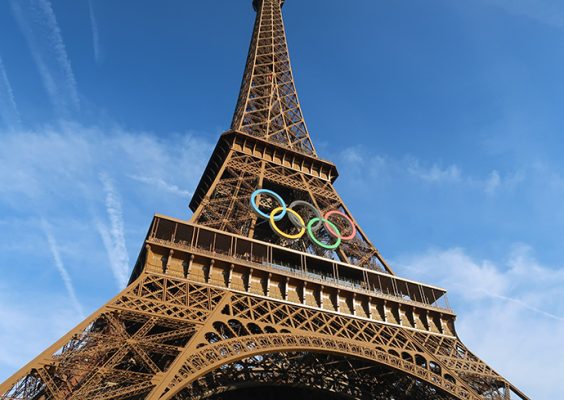 While hosting the Games is a huge coup for the host city, it is also a huge challenge, particularly regarding infrastructure.
While hosting the Games is a huge coup for the host city, it is also a huge challenge, particularly regarding infrastructure.
“Hosting the Olympics is a big deal, but it can also be an urban development disaster for cities if they’re not careful about it,” Myers says. “The danger is that you build up a lot of new infrastructure, then don’t end up using it afterward in everyday urban life, or those things end up being abandoned where they could have been repurposed into housing, a new subway line or something to that effect.”
In the case of London, much of the main Olympics infrastructure was located around the periphery, so the city center was not tied up with the security mechanisms that accompany the Games. “You could still walk around and experience the city’s iconic architecture,” Myers says.
This year’s Games—and Paris—present different challenges. Conflict around the world has resulted in extraordinary security at the Olympics. As some events are happening at the landmarks—beach volleyball at the Eiffel Tower and equestrian events at Versailles for instance—the experience of these landmarks is affected.
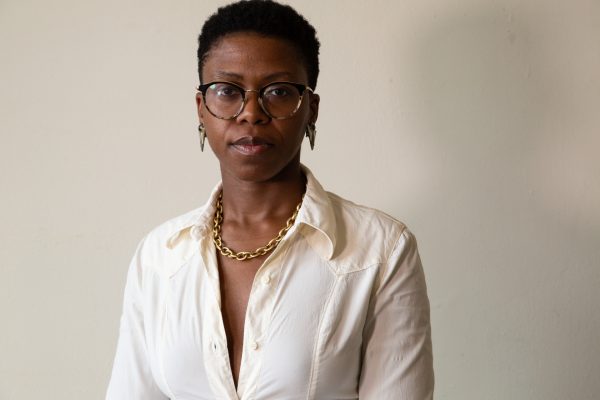
“The beautiful, fabulous thing about Parisian monuments is that they’re very much integrated into the urban fabric of the city,” Myers says. “You can take a casual free walk down the river Seine and see incredible things. You see the Eiffel Tower, you see the Grand Palais and the Petit Palais. You see the Invalides, you see the beautiful Pont Alexandre III. There is a continuity in the urban fabric. With the security mechanisms put in place, all of that linearity, the way that Paris is a walking city, gets truncated and split up. So rather than seeing the monuments as things that are flowing within an urban fabric, you see them as these objects through security fencing.”
Bringing the events into the city has taken the focus off the periphery, which is where immigrant communities have historically made their home. “These spaces are also beautiful, and people who live there are proud of these places,” Myers says. “By not celebrating the periphery, you lose out on being able to celebrate what all of those communities have brought to Paris, which is so much cultural and political energy and modernization.”
Holding events at historic landmarks, such as the Eiffel Tower and Versailles is a great celebration of Paris (think of medal winners posing for photographs at these grand sites), but restricts access to these sites to ticketholders.
“You don’t have that very Parisian happening, that idea that you are walking and just stumble upon something that’s quite striking,” Myers says. “Those are excellent images for tourism, but the downside is also for small businesses who experience a drop in foot traffic.”
Not only do these iconic landmarks serve as locations and backdrops for Olympic events, they will live on after the Games have ended on medals and commemorative coins.
“The Eiffel Tower is a commercial symbol of Paris, and it’s one of those things that’s often more celebrated internationally than it necessarily is in the everyday life of the city,” Myers says. “It is used to represent France in a way that is quite general and doesn’t necessarily get to the specificity of what the city is. This is the nature of trying to put together a unified national vision instead of celebrating the quirks and the specificities of Paris.”
“It seems like while there is a celebration of these beautiful Parisian monuments, there’s also a desire to almost remove them from their context as if they’re hovering just above the city. And that feels to me like a missed opportunity,” Myers says.
What will Myers, a former track runner, be watching during these Paris Games? “I love [U.S. athlete and women’s 100-meter competitor] Sha’Carri Richardson. Also, the women’s Jamaican track team is incredible. I hope we’ll see some very special efforts in track this year,” Myers says.
More about Myers’ experience in Paris can be found in her podcast, “Here There Be Dragons.”
